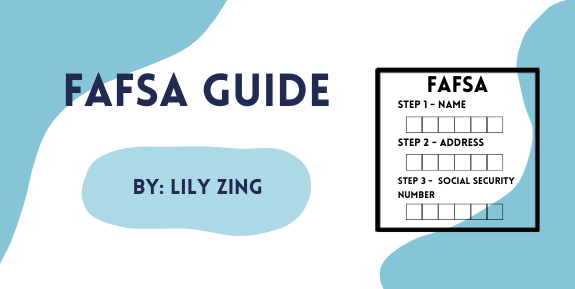The Free Application for Federal Student Aid (FAFSA) is a foreign topic to many high school students. As college and scholarship applications make their way onto a student’s to-do list, filling out a FAFSA form can feel like just another stressful task. But the truth is, this application is simpler than it looks, and it can open doors to financial aid opportunities that make college more affordable. Here’s everything you need to know to tackle the FAFSA with confidence.

Some common misconceptions about FAFSA is that it is too time-consuming or unnecessary if a student’s parents have a high income. While it may sound like a task that takes up a lot of time, filling out this application is mostly about answering questions and gathering your financial documents.
It is not as hard as everyone makes it out to be, and you only have to fill it out once a year. This one-time process can make a big difference in your life. It is easy to assume FAFSA is only for low-income families, but that is not true. Even students from higher-income families can qualify for assistance. Students can qualify for work-study, a program that allows students to work part-time with the school to finance their personal or educational expenses. Additionally, FAFSA allows students to take out student loans. These loans are different from regular private loans and offer lower interest rates. Most importantly, many scholarships will use your information from the FAFSA form to determine your eligibility for their scholarships, as it is the most efficient and fastest way to learn about your financial status.

The kind of documents a student needs may vary depending on the student’s identity. But for the most part, many students will need the same things. Both students and parents will need their Social Security Number (SSN). If you are not a U.S. citizen, you will need your A-Number or Alien Registration Number.

One of the most important pieces of information you will need is your parents’ 2023 federal income tax return. If compatible, you will also need bank statements and records of investments. These documents help the government determine how much financial assistance you qualify for. If you are part of a special group, like children of veterans or military personnel, additional documentation may be required. Having these items ready before starting the application makes the process go faster.
 The FAFSA form typically opens every year on Oct. 1, but this year, it opened on Dec. 31. That means students have less time than usual to complete the application before their college deadlines. It is crucial to check the deadlines for each school you are applying to, as missing them could mean losing out on financial aid. Now is not the time to wait until the last minute, because some aids like work-study programs and grants are awarded on a first-come, first-serve basis.
The FAFSA form typically opens every year on Oct. 1, but this year, it opened on Dec. 31. That means students have less time than usual to complete the application before their college deadlines. It is crucial to check the deadlines for each school you are applying to, as missing them could mean losing out on financial aid. Now is not the time to wait until the last minute, because some aids like work-study programs and grants are awarded on a first-come, first-serve basis.
If you need a more thorough explanation and help on completing FAFSA, SHS will be providing a help session on Wednesday, Jan. 22 from 2 to 6 p.m. There will be translators (Hakha Chin, Spanish and Swahili) available at the session.



